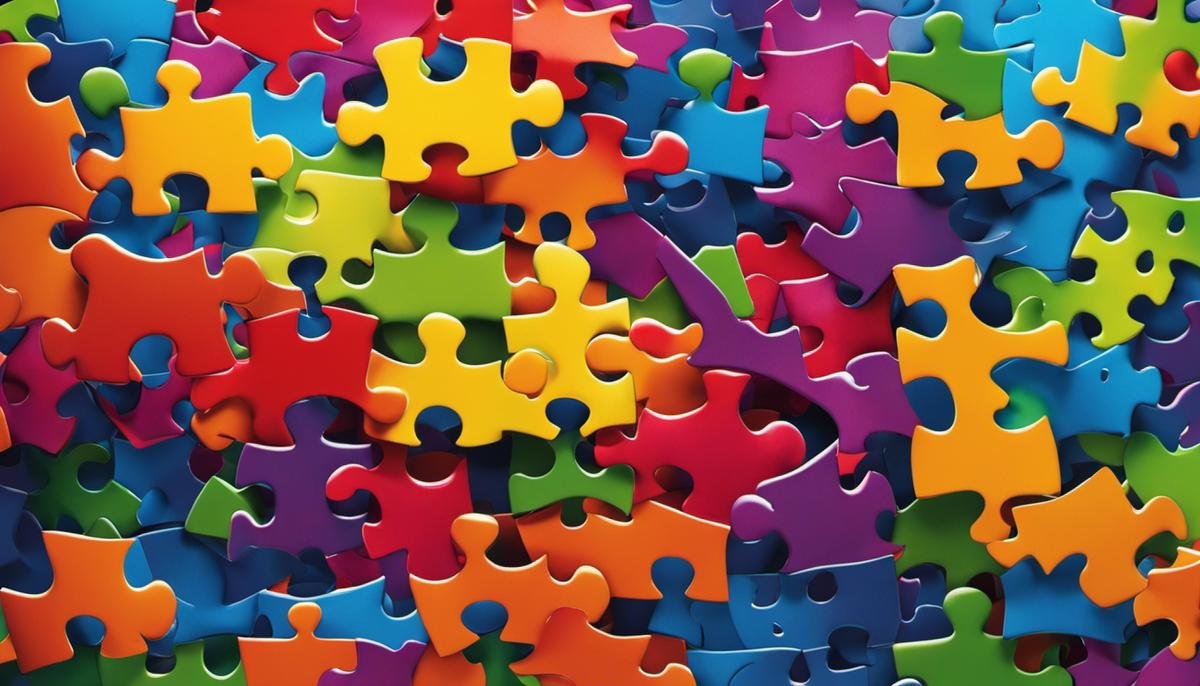
In the vast landscape of human cognitive and developmental disorders, Autism Spectrum Disorder (ASD) stands as an enigma that continues to perplex researchers and medical professionals around the world. This intriguing disorder, characterized by a kaleidoscope of symptoms that range from communication difficulties to unorthodox social interactions, is more than just a diagnosis—it’s a unique experience that affects each individual differently. A frequent trait associated with ASD is hyperactivity, which can present daily challenges for both the individual and their caregivers. This article aims to breakdown the complexity of ASD, shedding light on its association with hyperactivity, and providing practical strategies for managing this characteristic.
Unpacking Autism Spectrum Disorder (ASD)
As cherished as parenthood is, it’s a journey filled with joy, upheaval, learning, discovery, and empathy — especially when it comes to understanding children living with Autism Spectrum Disorder (ASD). Today, the goal is to unravel the often misunderstood world of Autism, shedding light on what exactly it is and how it manifests in children.
Autism Spectrum Disorder, as defined by the American Psychiatric Association, is a complex developmental condition that involves persistent challenges in social interaction, speech, nonverbal communication, and restricted/repetitive behaviors. Contrary to popular belief, it’s not a single disorder but rather a spectrum of closely related disorders sharing a core of symptoms. Accordingly, every child on the spectrum might experience their symptoms differently or exhibit different levels of severity.
It’s crucial to be aware that the signs of Autism may become observable as early as between the ages of 2 to 3 years old. These might include difficulties making eye contact, preferring to play alone, using fewer or no social gestures (like waving), delayed speech, or unusual tone of voice. Other children may show remarkable abilities surpassing their age like precise attention to detail or memory prowess.
If a child exhibits restricted interests or repetitive behaviors characteristic of ASD, these may manifest as intense fascination with particular topics or subjects, rigid routine establishment, or repetitive mannerisms like hand-flapping or rocking.
While these behaviors may make children with ASD stand out, let’s underline the importance of celebrating diversity. Sure enough, children with Autism might require additional support or personalized learning plans to thrive, but isn’t that true for all children? Each one, irrespective of where they fall on the spectrum, is a unique learner. Investing time and patience can illuminate the special skills, talents, and potential dwelling within these extraordinary young minds.
Familiarity with the symptoms and understanding the scope of Autism Spectrum Disorder is critically important, not just among parents, but teachers, caregivers, and society at large. This fosters an inclusive, understanding environment that supports early intervention, which in turn, increases the odds of positive developmental outcomes for children with Autism. So, let’s strive together to make this world an accepting and embracing place for our wonderful, diverse little champions. Remember, to know them is to love them.
Awareness, information, and love can be a catalyst for positive change, turning challenges into triumphs. After all, it’s the shared commitment to nurturing love and understanding that makes a strong community and an even stronger family.

Associated Hyperactivity with ASD
The Connection Between Hyperactivity and ASD: A Comprehensive Context
Building beautifully diverse homes and communities often means understanding and accommodating the unique needs of every individual, especially those with Autism Spectrum Disorder (ASD). Living with ASD can look different from person to person, as it includes a wide array of traits and characteristics. Among those traits, hyperactivity often becomes a prominent feature.
Firstly, let’s unpack what hyperactivity exactly means. In general understanding, it refers to a state of being unusually or abnormally active. For individuals with ASD, this term may signify a difficulty in focusing, lack of patience, restlessness, and impulsivity – conditions which often overlap with symptoms of ADHD (Attention Deficit Hyperactivity Disorder). It’s necessary to understand this connection to offer the right kind of environment for children with Autism to flourish.
At the heart of the relationship between hyperactivity and ASD is the brain. The neurological differences in individuals with Autism can often manifest in behaviors that are typically labeled as hyperactive. Increased movement, restlessness, or impulsivity; all these could be the brain’s response to the unique way it is wired in a child with ASD. Essentially, what we categorize as hyperactivity might actually be a child’s way of communicating their needs, responses, or feelings.
Furthermore, sensory sensitivities often associated with ASD could induce hyperactive behavior. Children with Autism might be hypersensitive or hyposensitive to certain stimuli – be it sounds, lights, textures, smells, or tastes. This sensory overload or underload can lead to bouts of increased physical activity as they attempt to adjust and respond to their surroundings. Hence, what may seem like hyperactivity could be reactionary behavior to cope with sensory experiences.
However, bear in mind the term ‘spectrum’ in ASD stresses on the variability and uniqueness of these experiences. Not every individual with ASD will demonstrate hyperactivity, and not every sign of hyperactivity signifies an Autism diagnosis. It’s the intricate interlacing of multiple factors that crafts each unique Autism journey.
Make no mistake – hyperactivity does not define an individual with Autism. It’s simply one of countless characteristics these radiant individuals may or may not possess. Each character trait, including hyperactivity, contributes to their wonderfully unique personality.
While it is crucial to understand these behaviors, it’s equally essential to reiterate that these children, like all others, are more than the sum of these behavioral patterns. They are brilliant minds with unique experiences. It’s all about understanding them, valifying their emotions and responses, and empowering them to flourish in their own unique ways.
Let’s continue to embark on this journey together, educating ourselves and spreading awareness, illuminating the path towards acceptance and inclusion for everyone. The key to a harmonious community is not just the acceptance of similarity, but also an appreciation of variance. After all, at the end of the day, isn’t it our shared differences that make our world so beautifully diverse?

Effective Strategies to Manage ASD Hyperactivity
This article will now explore practical and effective ways to manage hyperactivity in children with ASD. Notably, hyperactivity is often more complex in children with ASD as it can be a form of communication or even related to sensory sensitivities. While it’s essential to understand the child’s behavior, it is equally important to create a supportive environment that values their uniqueness.
The first step in managing hyperactivity is ensuring a consistent and structured routine for the child with ASD. An unpredictable environment can exacerbate hyperactive behaviors, but a structured routine provides the predictability and stability that often help keep hyperactivity under control.
Consider incorporating visual schedules or charts to illustrate daily and weekly routines. Visuals can often aid children in making sense of their day-to-day activities. In this manner, they can anticipate what’s next, reducing anxieties that might fuel excessive energy and restlessness.
Another crucial strategy is providing outlets for their energy. Regular physical activity can go a long way in managing hyperactivity in children with ASD. This might be through organized sports, yoga for kids, or simply a daily playtime in the park. Regular physical exercise not only helps burn off excess energy but also teaches valuable lessons about teamwork, social interaction, and self-control.
Furthermore, understanding sensory sensitivities and learning how to navigate them can provide a tremendous help in managing hyperactivity. Sensory-based therapy (also known as occupational therapy) can be beneficial in teaching children with ASD skills to soothe and control themselves. This therapy might include activities like swinging, jumping on a trampoline, pulling or carrying heavy items which can help the child feel more grounded and relaxed.
Remember, it’s essential to observe what specific sensory inputs might escalate or soothe the child’s hyperactivity. Every child with ASD is unique, and what works for one might not necessarily work for the other. But once these patterns are identified, they can be incorporated into daily routines to better manage hyperactivity.
Some children with ASD may also benefit from behavioral techniques, often facilitated by a behavioral therapist, that aim to encourage desired behaviors and minimize less desirable ones. Cognitive Behavioral Therapy (CBT), for example, is an evidence-based approach that can help children understand and manage their behaviors.
Lastly, it cannot be overstated how important it is to ensure the child with ASD understands they are loved and valued, hyperactivity and all. By empowering them, we foster their self-esteem and resilience, creating a positive cycle that can also help manage hyperactivity.
A child with ASD is uniquely themselves, hyperactivity and all, and it’s their right to be understood and supported. Managing hyperactivity isn’t about suppression, but about channeling that energy in ways that let them live happy, healthy, and fulfilled lives in their own unique ways. Through patience, understanding, and a lot of love, together, they can navigate this journey.

Taking on the challenge of understanding and managing ASD and associated hyperactivity is no small task, but with persistence, patience and compassion, it is far from insurmountable. Armed with informed awareness about the disorder, caregivers and individuals alike can create a nurturing environment that fosters growth, adaptability, and positive experience for those with ASD. Remember that each person journeying through ASD has a unique story and their reactions to strategies may differ. What’s essential is the earnest attempt to understand, support, and reassure them. By adapting our world to accommodate, and not stigmatize, these unique perspectives, one can contribute to a more inclusive world for those on the spectrum.




